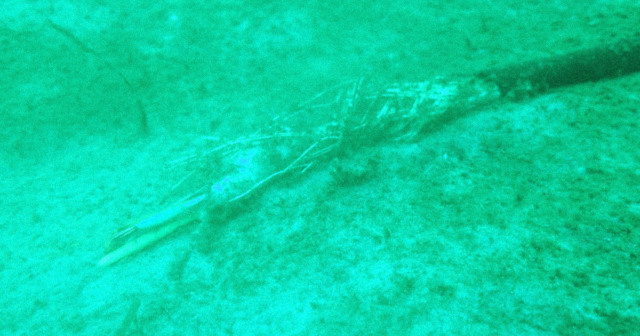Large Underwater Research Station has disappeared without a fucking trace. I welcome the Elder Gones finally waking up!

A large underwater research station has flat-out fucking vanished. Is this the Elder Gods finally waking up? Getting ready to wipe our dumb asses out? One can only hope. Either way, this is wild.
Gizmodo:
A large monitoring station used to gather important scientific data in the Baltic Sea has mysteriously vanished.
The underwater observatory, which had been on the seafloor since December 2016, is managed by the GEOMAR Helmholtz Center for Ocean Research Kiel and the Helmholtz Center Geesthacht (HZG). On August 21 at 8:15 p.m. local time, transmissions from the €300,000 ($330,000) station came to a sudden halt. Divers were dispatched to the site, only to find—much to their astonishment—that the entire structure was gone, save for a shredded transmission cable, according to a GEOMAR statement.
The observatory was in a restricted area off the northern coast of Germany. Boats, including fishing vessels, are not allowed into the area, the BBC reported. That somebody, or a group of individuals, removed the observatory remains the most plausible explanation. Other factors, such as a massive storm, heavy currents, or even marine animals, were ruled out as potential causes owing to the weight of the instrument. Who or what removed the science station, and why, is a complete mystery. German police were alerted to the incident and are now investigating, according to GEOMAR.
The Boknis Eck Observatory is—or at least was—located at the outlet of Eckernförde Bay, which is north of Kiel, Germany and south of the Danish border. It was 1.8 kilometers (1.1 miles) off shore, planted at a depth of 22 meters (72 feet), reported the BBC.
The station collected data about water temperature, nutrients, salinity, the speed of water flow, and concentrations of chlorophyll and methane. This data is used to evaluate the health of the ecosystem in and around the southwestern Baltic Sea. By monitoring these changes, scientists can be alerted to potential problems and take the required countermeasures. Scientists have been collecting data in the bay since the 1950s. The observatory is also used in the COSYNA network (Coastal Observing System for Northern and Arctic Seas) of the HZG.nge story in the coming days and weeks.
[Continue reading at Gizmodo]



